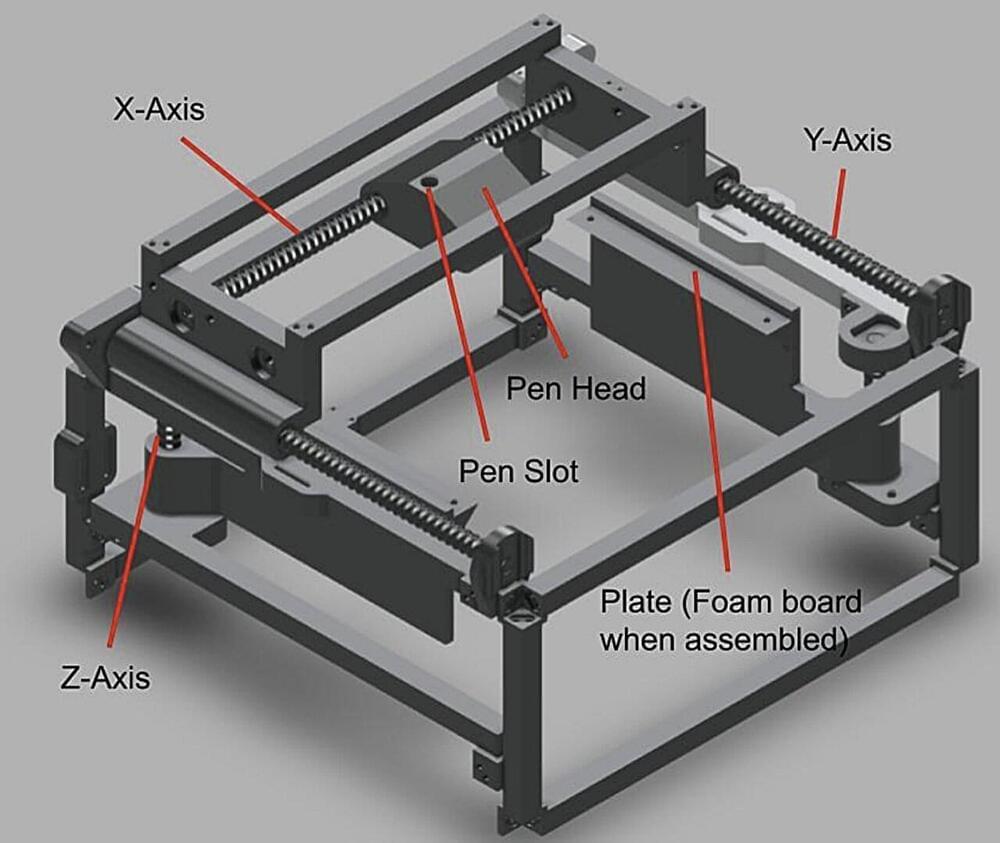More than 10,000 organizations, including Comcast, Block, Rivian and Shell, rely on the company’s Databricks Data Intelligence Platform to manage and analyze data for AI applications.



For over a decade, complexity scientist Peter Turchin and his collaborators have worked to compile an unparalleled database of human history – the Seshat Global History Databank. Recently, Turchin and computer scientist Maria del Rio-Chanona turned their attention to artificial intelligence (AI) chatbots, questioning whether these advanced models could aid historians and archaeologists in interpreting the past.
The study, which is the first of its kind, evaluates the historical knowledge of leading AI models such as ChatGPT-4, Llama, and Gemini.
The results, presented at the NeurIPS conference, reveal both potential and significant limitations in AI’s ability to grasp historical knowledge, especially at the nuanced, expert level.

Recent advances in robotics and artificial intelligence (AI) are enabling the development of a wide range of systems with unique characteristics designed for varying real-world applications. These include robots that can engage in activities traditionally only completed by humans, such as sketching, painting and even hand-writing documents.
These robots could have interesting applications in both professional and creative contexts, as they could help to automate the creation of artistic renderings, legal papers, letters and other documents in real time. Most handwriting robotic systems to date have considerable limitations, such as high production costs (around $150) and a large size.
Two researchers affiliated with the global student non-profit organization App-In Club recently developed a new cost-effective robotic handwriting system that could be more affordable for individual consumers, schools, universities and small businesses. This system, introduced in a paper on the arXiv preprint server, integrates a Raspberry Pi Pico microcontroller and other components that can be produced via 3D printing.

Id say ASI by 2029 or sooner, but we re now in uncharted waters.
Amodei: “I think progress really is as fast as people think it is.”

A Minnesota-based glazing firm is using a robotic system to install high-rise glass panel bracket. Harmon is installing the latest technology with the help of Raise Robotics and Universal Robots. For high rise fastener installation, the robotic system has improved worker safety, as well as consistency and precision.
The companies revealed that construction workers need extensive safety rigging to install glass panel brackets up to 1,000 ft. into the air.

As artificial intelligence models become increasingly advanced, electronics engineers have been trying to develop new hardware that is better suited for running these models, while also limiting power-consumption and boosting the speed at which they process data. Some of the most promising solutions designed to meet the needs of machine learning algorithms are platforms based on memristors.
Memristors, or memory resistors, are electrical components that can retain their resistance even in the absence of electrical power, adjusting their resistance based on the electrical charge passing through them. This means that they can simultaneously support both the storage and processing of information, which could be advantageous for running machine learning algorithms.
Memristor-based devices could be used to develop more compact and energy-efficient hardware for running AI models, including emerging distributed computing solutions referred to as edge computing systems. Despite their advantages, many existing memristor-based platforms have been found to have notable limitations, adversely impacting their reliability and endurance.

Unlike traditional RLHFs, which only provide feedback after an assessment has been completed, pBCIs capture implicit, real-time information about the user’s cognitive and emotional state throughout the interaction. This allows the AI to access more comprehensive, multidimensional feedback, including intermediate decisions, judgments and thought processes. By observing brain activity when assessing situations, pBCIs provide a more comprehensive understanding of user needs and enable the AI to adapt more effectively and proactively.
By combining RLHF with pBCIs, we can elevate AI alignment to a new level—capturing richer, more meaningful information that enhances AI’s responsiveness, adaptability and effectiveness. This combination, called neuroadaptive RLHF, retains the standard RLHF approach but adds more detailed feedback through pBCIs in an implicit and unobtrusive way. Neuroadaptive RLHF allows us to create AI models that better understand and support the user, saving time and resources while providing a seamless experience.
The integration of RLHF with pBCIs presents both opportunities and challenges. Among the most pressing concerns are privacy and ethics, as pBCIs capture sensitive neural data. Ensuring proper consent, secure storage and ethical use of this data is critical to avoid misuse or breaches of trust.
Nvidia, Microsoft, and Arm are among the technology partners.

In today’s AI news, a new $500 billion, private sector investment to build artificial intelligence infrastructure in the US, with Oracle, ChatGPT creator OpenAI, and Japanese conglomerate SoftBank among those committing to the project. The joint venture, called Stargate, is expected to begin with a data center project in Texas.
In other advancements, Perplexity has launched an aggressive bid to capture the enterprise AI search market, unveiling Sonar, an API service that outperforms offerings from Google, OpenAI and Anthropic on key benchmarks while also undercutting their prices. Perplexity — now valued at $9 billion — directly challenges larger competitors.
And, Santee Cooper, the big power provider in South Carolina, has tapped financial advisers to look for buyers that can restart construction on a pair of nuclear reactors that were mothballed years ago. The state-owned utility is betting interest will be strong, with tech giants such as Amazon and Microsoft in need of clean energy to fuel AI.
Then, Google is making a fresh investment of more than $1 billion into AI startup Anthropic, the Financial Times reported on Wednesday. This comes after Reuters and other media reported earlier in January that Anthropic was nearing a $2 billion fundraise in a round, led by Lightspeed Venture Partners, valuing the firm at about $60 billion.
In videos, Indeed CEO Chris Hyams, and Stanford Digital Economy Lab Director Erik Brynjolfsson, join Bloomberg’s Work for a discussion on the key trends impacting employees and employers in 2025 and beyond.
Meanwhile, Sarah Friar, Chief Financial Officer of OpenAI warned that there is strong competition in the development of AI coming from China, recognizing the economic and security benefits of the emerging technology.
S Shirin Ghaffary at Bloomberg House in Davos. ‘ + s Erik Schatzker at Bloomberg House in Davos. + ll look at how Frames offers cinematic image outputs, best practices for prompting, and showcases user-generated examples. + Thats all for today, but AI is moving fast, subscribe today to stay informed. Please don’t forget to vote for me in the Entrepreneur of Impact Competition today! Thank you for supporting me and my partners, it’s how I keep NNN free.